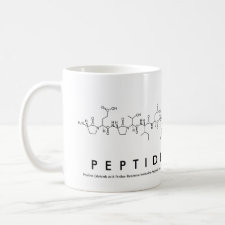
Authors: Rick J, Chou TC
Article Title: Enthalpy changes associated with protein binding to thin films.
Publication date: 2005
Journal: Biosensors and Bioelectronics
Volume: 20
Issue: (9)
Page numbers: 1878-1883.
DOI: 10.1016/j.bios.2004.11.015
Alternative URL: http://www.sciencedirect.com/science/article/B6TFC-4F14YVH-3/2/43e2650def03e55fa3e973f9d12ec1c7
Abstract: Molecularly imprinted thin films consisting of proteins embedded in polymerised aminophenyl boronic acid have been made on glass supports. The protein contents of the films have been optimised to achieve a maximum energy of interaction between the film and the native template. The fabrication of the films and the subsequent removal from their surfaces of the imprint proteins has been shown to be a facile and easily reproduced process. The enthalpy changes associated with the rebinding of the films with their original templates (lysozyme and cytochrome c) and with non-native templates has been examined by micro-calorimetry. The results demonstrate that thin films can be successfully imprinted as shown by the significant reduction in the enthalpy (Δ H) observed when the films were rebound with proteins other than the original templates.Additionally, it was shown that after binding, non-template proteins could be removed by washing and a greater enthalpy again observed when the films were rebound with the native protein compared to that which had been found with the non-native protein
Template and target information: protein, lysozyme, cytochrome c
Author keywords: thin film, imprinted polymer, aminophenylboronic acid, protein, microcalorimetry, lysozyme, Cytochrome C



Join the Society for Molecular Imprinting

New items RSS feed
Sign-up for e-mail updates:
Choose between receiving an occasional newsletter or more frequent e-mail alerts.
Click here to go to the sign-up page.
Is your name elemental or peptidic? Enter your name and find out by clicking either of the buttons below!
Other products you may like:
 MIPdatabase
MIPdatabase









